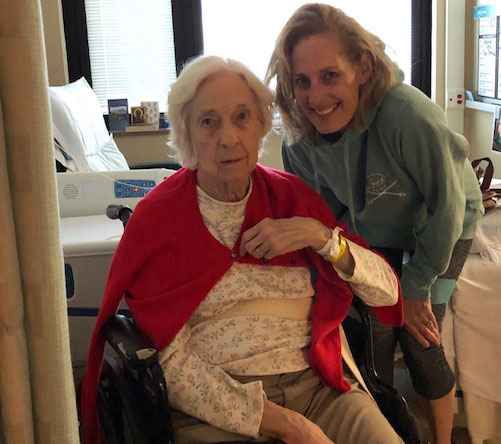
Patient experience. Two words we hear a lot about as healthcare marketers yet may have very little personal experience with. Until we, or someone we love, becomes the patient. I’ve spent a lot of time in a lot of hospitals over my career, mostly strategizing with clients about how to create and maximize a positive image. These past few weeks in the hospital have been a little different. And more than a little enlightening. I was thrust into the position of “adult daughter healthcare decisionmaker”, visiting my mother who has been thrust into the unfortunate position of “stroke survivor”. Things are more than a little amiss. Emotions are high. Mom’s trying hard at rehab but grieving at the same time. As are we. The new normal for her 7 kids is spending all our spare time visiting her, learning “MomCare” as I call it, reviewing LTC and Medicare supplemental policies, arranging home care, researching portable showers and handrails to adapt my sister’s house for her new home, etc. etc.
Which brings me to the enlightening part. It’s the little things that are making the difference. The OT “cheerleader” looking into her eyes and convincing her once again that yes, there IS movement potential in her lifeless right arm. The gentle aide cheerily answering the call button multiple times over a couple of hours for her ADL – and somehow making the toileting part seem as dignified as putting on your shoes. The PT asking about her life history and discovering a common Catholic parish in their pasts. The speech therapist who politely informed me the home-made pea soup I brought would need to be thickened a tad (swallowing risk)– and don’t worry, she would be delighted to puree it for me right then and there! The case worker who graciously walked me through what to expect and how to navigate post-discharge care – more than once. The doctor who spent 10 times as much time with her than any other patient (ok, he’s my husband, but still…!).
Which brings up how they handled our huge and physician-laden family in the ER. In addition to us kids and some spouses, there was my hospitalist hubby, my inquisitive ER intern son, and my sister-in-law’s twin, who happens to be a vascular neurologist (stroke doc), exercising his second-opinion telemedicine skills from Tacoma. Not to mention a recent nursing graduate and rehab nurse in the mix. “She must be allergic to the TPA with that lip swelling.” “Might need to intubate her.” “Let’s get some Benadryl and steroids into her IV, stat!” I apologized for our over-abundance of medical knowledge (INTERFERENCE), but the ER doc handled our probing, pushing, panic and overall “worst nightmare patient family” situation with professionalism and aplomb.
My discovery? Yes, the beautiful, sexy, multi-thousand dollar hospital brand campaigns we create have their place. But the behind-the-scenes action of a patient unit is much more important in living out that positive image. And the most critical talent is not the TV spot actor, but the patient caregivers who truly live the hospital mission with empathy and benevolence daily. According to the Agency for Healthcare Research and Quality, substantial evidence points to a positive association between various aspects of patient experience, such as good communication between providers and patients, and several important health care processes and outcomes. These processes and outcomes include patient adherence to medical advice, better clinical outcomes, improved patient safety practices, and lower utilization of unnecessary health care services. We are hopeful my mom’s positive patient experience will help make these outcomes a reality.
For marketing trends, subscribe to Brogan Weekly Recap.























